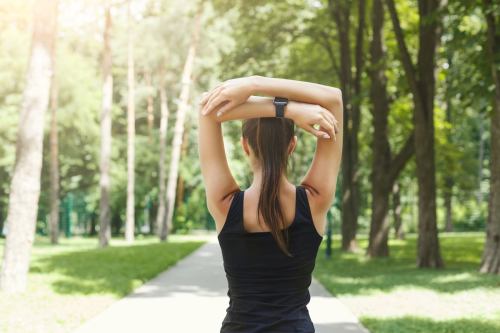Until this week, I knew exactly two things about fascia: It is somehow related to your muscles, and its BFF is the foam roller.
But as I learned, it’s important to know a whole lot more about it than that, because it’s apparently a major component of tissue underneath your skin that plays a big role in your body mechanics. And if you don’t stay on top of having healthy, limber fascia, you may wind up with some much dreaded back pain.
A little anatomy lesson: “Fascia is a type of connective tissue underneath the skin that surrounds and supports the muscles,” explains Jeff Brannigan, program director at New York’s Stretch*d studio. “It can be found both superficially closer to the skin and deeper throughout the muscular system.” The magical thing about fascia is that it’s bendy and flexible and can withstand all sorts of stress, whether it’s from a hardcore HIIT workout or a full-on marathon.
As durable as it is, issues can arise when your fascia is tense or tight—which means “its ability to properly separate our muscles is hindered, which can lead to compromised blood flow and compensation throughout the muscular system during movement and activity,” says Brannigan.
So if you’re dealing with back pain, it could be due to issues in your quadrates lumborum or “QL,” he says. “This is a deep abdominal muscle that’s often the culprit when experiencing back pain,” says Brannigan. “It will often compensate for a weak or tight hip and upper leg.” There’s a simple move you can do to stretch it out, though, for the sake of your back: the twist and dip, which stretches out your deep abdominal muscle and your side and low back.
To do this, sit with your back straight and feet flat on the floor, instructs Brannigan. Lock your hands behind your head with your elbows out, and rotate your upper body until you’ve twisted as far as you can go before returning to start position. Then rotate, hold, and go forward, leading toward the ground with your elbow. Return to an upright position. Work only one side at a time in short, active repetitions, then work the opposite side. “This will help to promote circulation and lengthen the muscle in a much more natural way,” he says. And you’ll be (to the tune of “Sexy Back”) bringing healthy back. Had to.
Oh, and here’s how to have proper neck alignment, which is also key for your posture. And these are posture exercises to try so that you’re totally upright and good to go.
Sign Up for Our Daily Newsletter
Get all the latest in wellness, trends, food, fitness, beauty, and more delivered right to your inbox.
Got it, you've been added to our email list.











